Abstract
The use of counterimmunoelectrophoresis (CIE) as a diagnostic tool in infectious diseases is becoming more widespread. This study was undertaken to determine the possible use of CIE in the more rapid identification of Streptococcus pneumoniae in clinical isolates. Typing sera were obtained from the Statens Seruminstitut, Denmark. Sixty-seven out of 68 pneumococcal isolates that were optochin sensitive and bile soluble were typed by CIE. One isolate was nontypable even after mouse passage. An additional three isolates that were optochin resistant were considered to be pneumococci on the basis of the bile solubility test and their typability by CIE. Seventy-seven alpha-streptococci were tested for the presence of cross-reacting capsular antigens. Fifty-three alpha-streptococci showed no cross-reactions using the omniserum. Precipitin bands were obtained with the omniserum with 10 of the isolates, but these did not react with type-specific antisera. However, 14 isolates did react with the type-specific pneumococcal antisera. The sensitivity of the test was increased by sonicating whole-cell suspensions before electrophoresis was carried out. Mueller-Hinton broths were inoculated with presumptive pneumococcal colonies that formed the predominant or only colony type on primary blood agar plates. These cultures required a 4-h incubation period with an initial inoculum of 10(6) viable organisms/ml before a precipitin band could be detected. Precipitin bands were observed in 54 out of 56 (97%) broth cultures of pneumococci that had been incubated for 4 h at 37 C. These data suggest that CIE could be a useful tool in the identification of S. pneumoniae isolated from clinical specimens.
Full text
PDF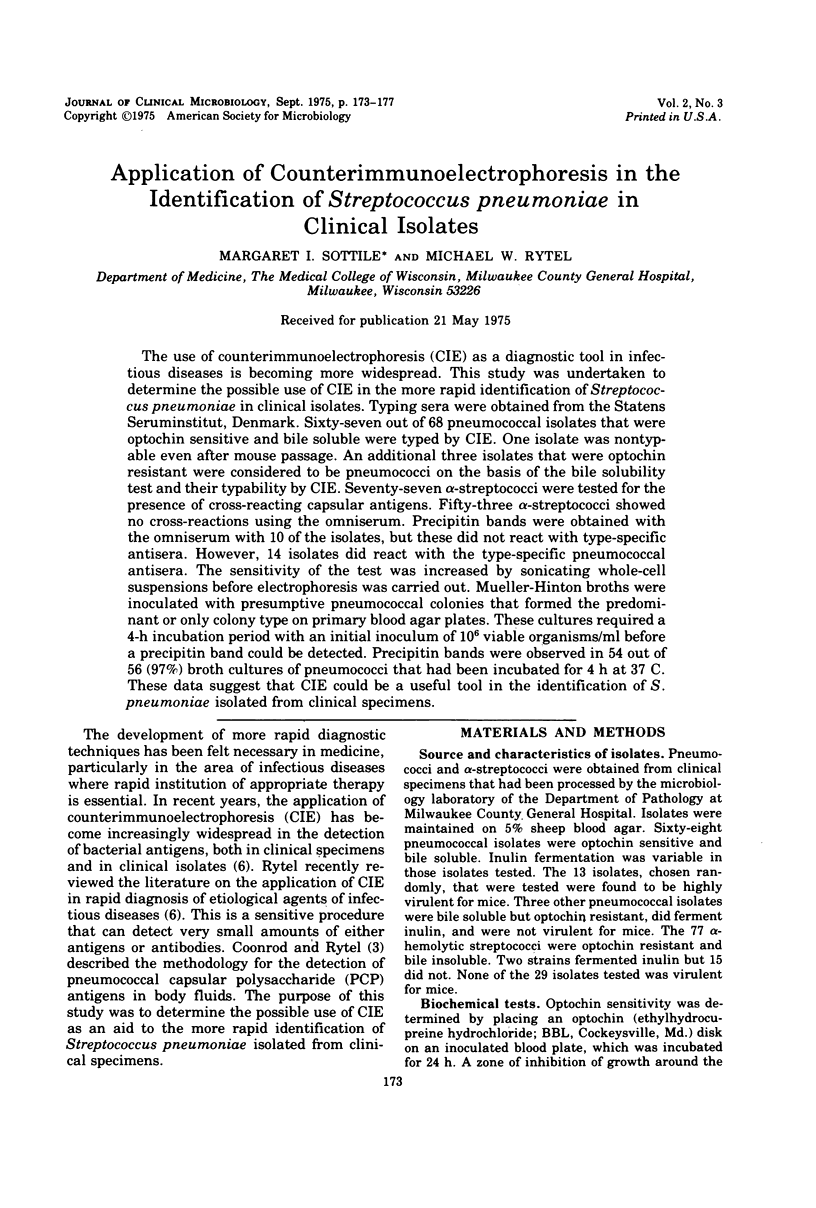
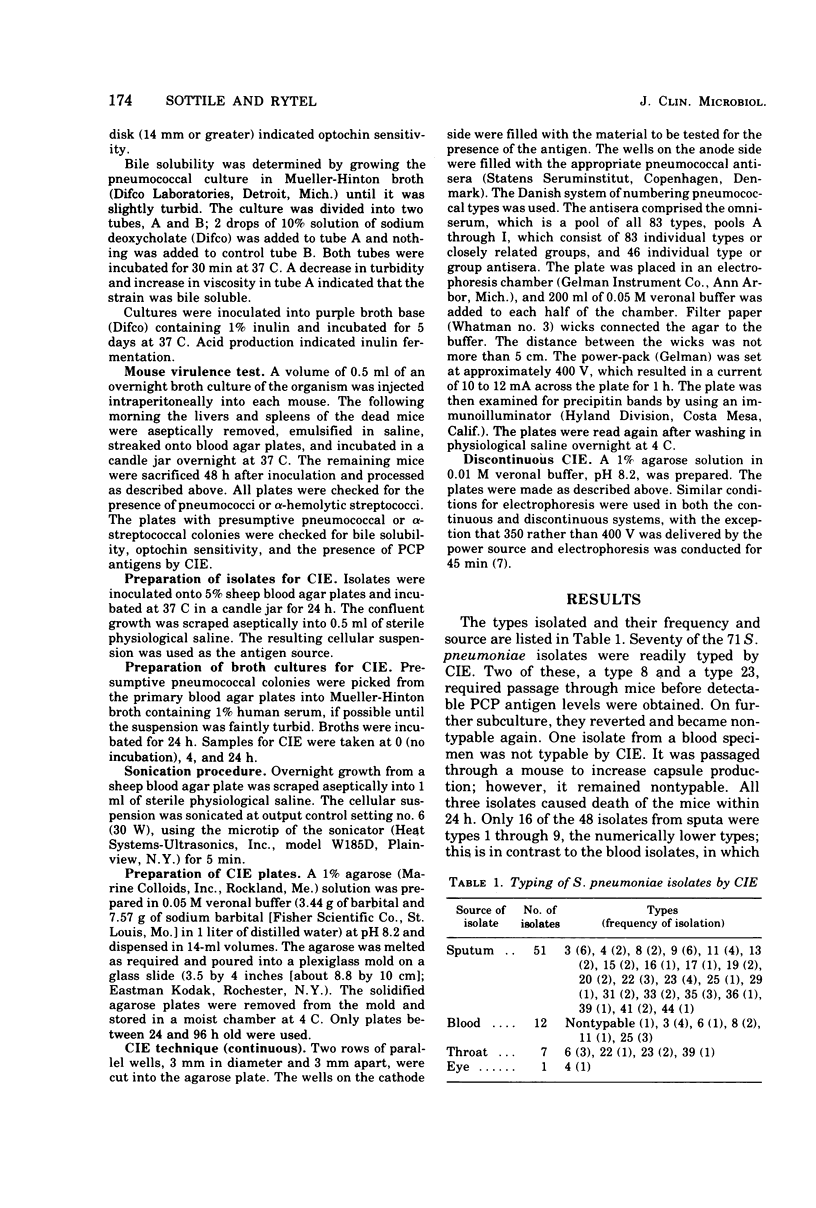
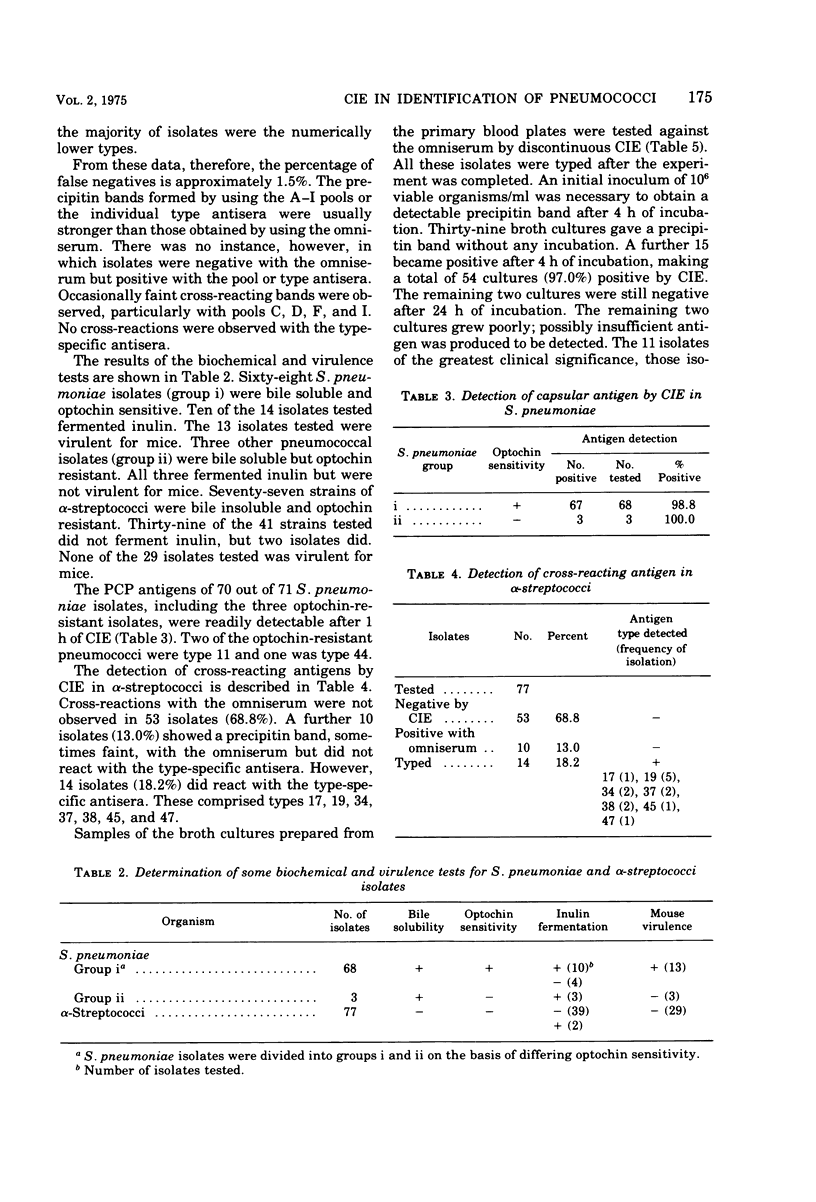
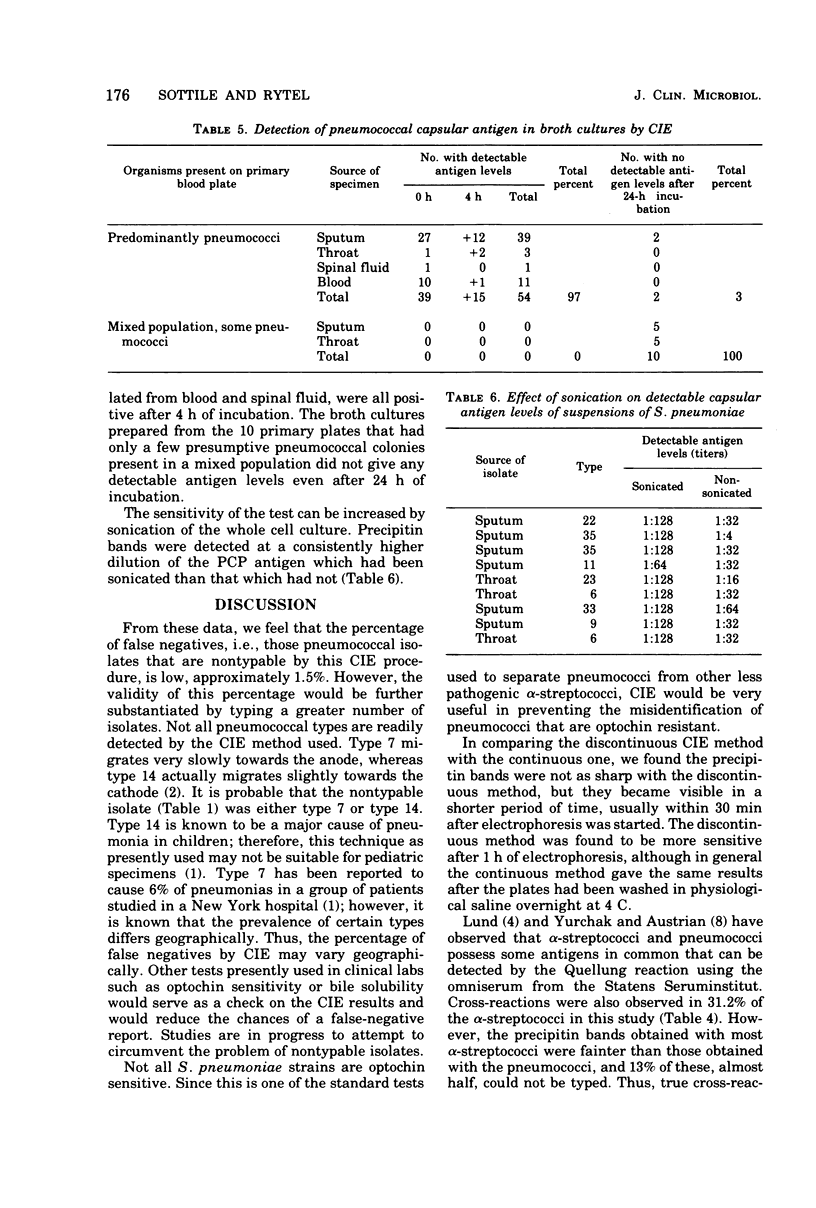
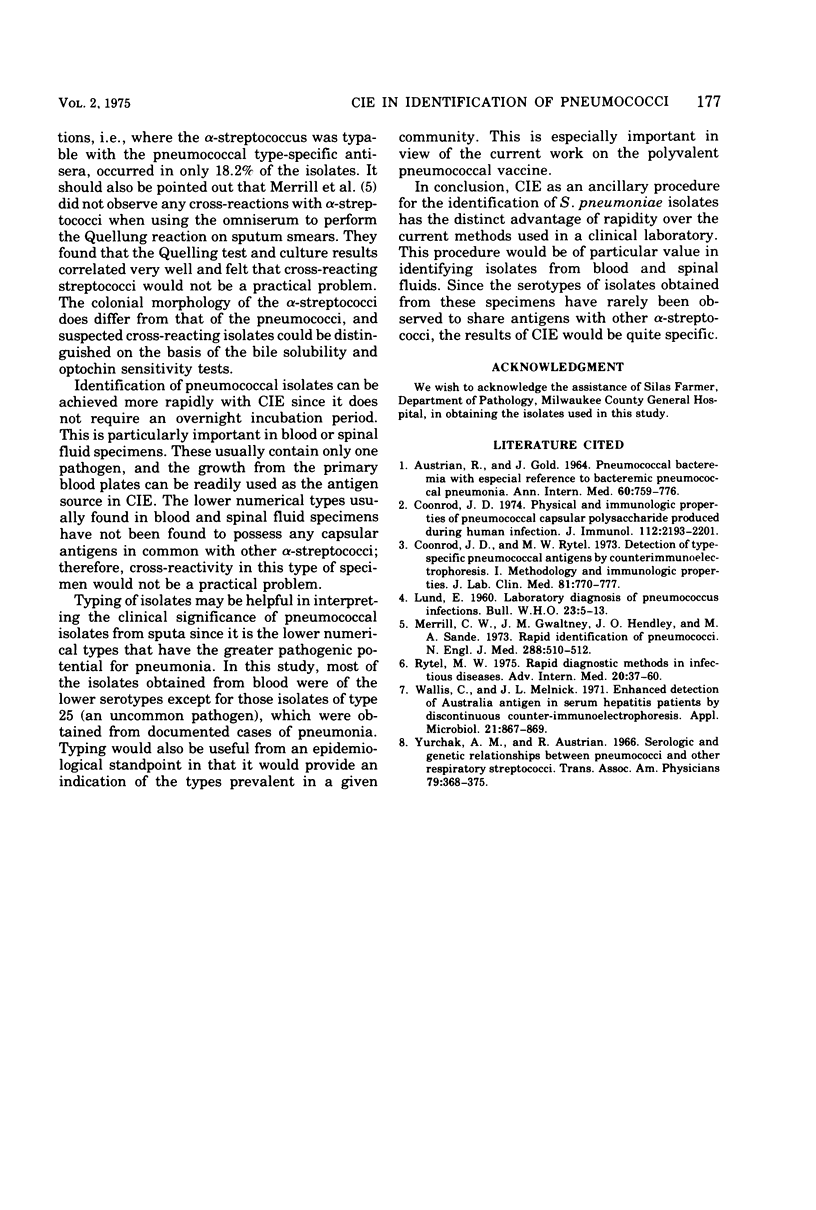
Selected References
These references are in PubMed. This may not be the complete list of references from this article.
- AUSTRIAN R., GOLD J. PNEUMOCOCCAL BACTEREMIA WITH ESPECIAL REFERENCE TO BACTEREMIC PNEUMOCOCCAL PNEUMONIA. Ann Intern Med. 1964 May;60:759–776. doi: 10.7326/0003-4819-60-5-759. [DOI] [PubMed] [Google Scholar]
- Coonrod J. D. Physical and immunologic properties of pneumococcal capsular polysaccharide produced during human infection. J Immunol. 1974 Jun;112(6):2193–2201. [PubMed] [Google Scholar]
- Coonrod J. D., Rytel M. W. Detection of type-specific pneumococcal antigens by counterimmunoelectrophoresis. I. Methodology and immunologic properties of pneumococcal antigens. J Lab Clin Med. 1973 May;81(5):770–777. [PubMed] [Google Scholar]
- LUND E. Laboratory diagnosis of Pneumococcus infections. Bull World Health Organ. 1960;23:5–13. [PMC free article] [PubMed] [Google Scholar]
- Merrill C. W., Gwaltney J. M., Jr, Hendley J. W., Sande M. A. Rapid identification of pneumococci. Gram stain vs. the quellung reaction. N Engl J Med. 1973 Mar 8;288(10):510–512. doi: 10.1056/NEJM197303082881007. [DOI] [PubMed] [Google Scholar]
- Rytel M. W. Rapid diagnostic methods in infectious diseases. Adv Intern Med. 1975;20:37–60. [PubMed] [Google Scholar]
- Wallis C., Melnick J. L. Enhanced detection of Australia antigen in serum hepatitis patients by discontinuous counter-immunoelectrophoresis. Appl Microbiol. 1971 May;21(5):867–869. doi: 10.1128/am.21.5.867-869.1971. [DOI] [PMC free article] [PubMed] [Google Scholar]
- Yurchak A. M., Austrian R. Serologic and genetic relationships between pneumococci and other respiratory streptococci. Trans Assoc Am Physicians. 1966;79:368–375. [PubMed] [Google Scholar]


